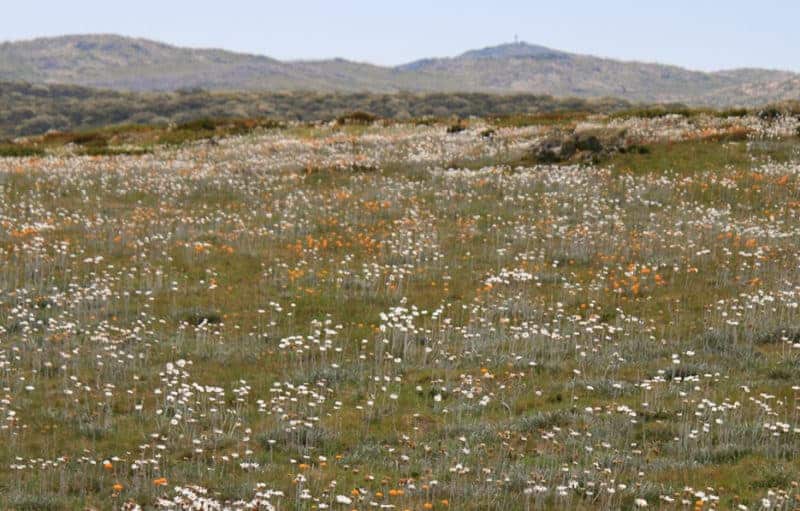PARK WATCH June 2018 |
David Donnelly, marine researcher and manager of Killer Whales Australia tells us how to have a whale of a time this winter.
Victoria’s coastline is no stranger to the presence of large whales. Since the early 1980s, southern right whales have been monitored from vantage points in western Victoria near Warrnambool. As a result of these efforts, the state now has excellent records of this species from this region and across the coast – but what of other large whales?
Since its inception in 2015, the Two Bays Whale Project (TBWP) has been using sighting data to track the likes of southern right, humpback, blue, killer and minke whales within the Barwon Heads to Inverloch (including Port Phillip and Western Port) region. In addition to these data, a small but useful collection of historical data has also been added, creating a very substantial dataset. These data are only now beginning to provide researchers at the Dolphin Research Institute with an understanding of these large mammals in the region.
The TBWP is a citizen science initiative, led by the Dolphin Research Institute in collaboration with Wildlife Coast Cruises. The project was born out of an increased sighting rate of humpback whales, and the introduction of dedicated whale watch tours leaving from Phillip Island.
To date, the project has validated 562 separate sighting events (excluding repeats) of 2001 animals, involving six species of medium to large cetacean. The vast majority of these events have been recorded between 2014 and the present, however supplementary data dating back to 1984 has also proved very valuable. Recent sighting data has been collected locally from whale watch tours leaving from Phillip Island as well as from land-based sightings from areas such as Point Nepean National Park, Cape Schanck and the Bunurong area of the Bass Coast.
The majority of sightings are made up by humpback whales during the northward migration season (June to late August). The return of this species to Victorian coastal waters became apparent in 1984 when three humpbacks entered Corio Bay, Geelong. This was the first published record of the species in our waters since commercial whaling ceased on the east coast in 1962. Prior to 2006 very few humpback whales were seen on the Victorian coast, and a sighting was a major news story. Today, seeing humpback whales in winter has become more of an expectation rather than a surprise. This is largely due to the excellent recovery of the species on the east coast, from an estimated 200–400 individuals post-whaling to around 30,000 this year. This population increase is estimated to be at a rate of approximately ten per cent per annum, which is quite remarkable.
Unfortunately, the same cannot be said for the southern right whale, which has shown a much slower recovery from the effects of commercial whaling in Australia. The current population estimate for southern right whales in southeastern Australia is approximately 250–300 individuals, with no significant population increase observed for this region in the last 30 years. The reasons for this poor recovery are still yet to be properly understood.
Aside from the frequent sightings of humpback and southern right whales, there are also regular sightings of killer whales in the Two Bays region. The killer whale, or orca, is the largest member of the dolphin family (Delphinidae) and is known to be present in all of the world’s oceans, ranging from sub-polar regions to the equator. This apex predator of the ocean is generally sighted in June and July and December to February in the Two Bays region. On the east coast of Australia, this species is highly mobile, rarely staying in the same location for more than a few hours. Sightings are scattered along the entire Victorian coast, with regular reports from Cape Bridgewater, Phillip Island and Port Phillip Heads. Most individuals in our waters are well known to the east Australian catalogue which is managed by Killer Whales Australia. A copy of the catalogue can be downloaded at www.wildiaries.com/articles/214-killer-whales-of-eastern-australia
Victorians are becoming more aware of whales in our local waters, and some people are now dedicating days to sitting at vantage points along our coast in the hope of catching a glimpse of these ocean giants as they pass by. Many keen folk also join whale watch tours from Cowes on Phillip Island and Port Welshpool, with the latter exploring the eastern side of Wilsons Promontory National Park. The unique and beautiful landscapes of the national park making for incredible backdrops to whale photos!
The Two Bays Whale Project would greatly appreciate hearing about sightings of whales within the region. Citizen scientists are encouraged to contribute sightings either by completing an online sighting form at www.dolphinresearch.org.au/research/dolphin-two-bays-sightings or by Facebook Messenger.
Did you like reading this article? Want to be kept up to date about nature issues in Victoria? Subscribe to our email updates.
You can also receive our print magazine Park Watch four times a year by becoming a member. Find out more here.
